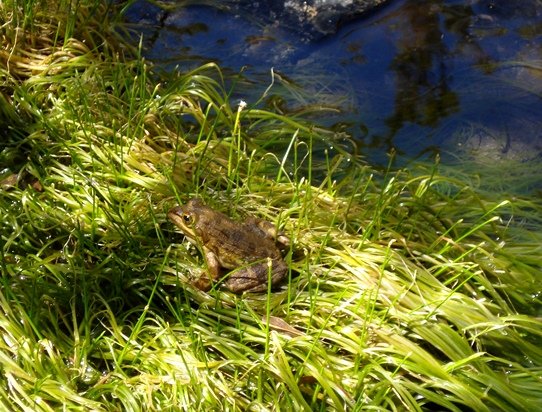What do frogs contribute to flowering plants?

Author: Ivan Lätti
Photographer: Judd Kirkel Welwitch
This resident of the Tulbagh region may be the Cape river frog, Amietia fuscigula. It lives near dams and rivers, tending to disappear into the water when disturbed by photographers and the like.
Frogs, irrespective of name, rank and status are everything but irrelevant to the wellbeing of flowering plants. They contribute to ecological impact above their size and weight. The following serves as examples:
Frogs live in wetlands and seeps where certain flowering plants often co-occur. The inevitable interspecies interactions are many and often mutually beneficial.
Frogs consume herbivorous slugs, mites and insects like aphids that cause plant damage. Their eating of seeds and fruit contributes to seed dispersal. It is possible that seeds passing through a frog’s digestive tract germinate better due to seed skin abrasion and the exposure to nutrients. Frog waste contributes nutrients to soil, supporting the contribution from microbes and fungi to soil health. The fact that an animal, also an amphibian, eats and defecates increases its ecological significance.
Although not primary pollinators, frogs continually visit and touch plants in their living areas. They can be significant incidental contributors to pollination in ecosystems where insect pollinators are scarce.
The disappearance of frogs from a terrain is an important bio-indicator of its ecosystem deterioration (Wikipedia; https://ecologiclife.com).

